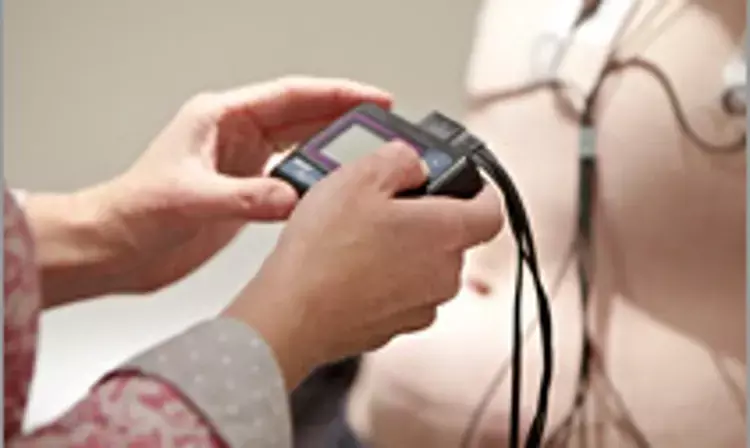- Home
- Medical news & Guidelines
- Anesthesiology
- Cardiology and CTVS
- Critical Care
- Dentistry
- Dermatology
- Diabetes and Endocrinology
- ENT
- Gastroenterology
- Medicine
- Nephrology
- Neurology
- Obstretics-Gynaecology
- Oncology
- Ophthalmology
- Orthopaedics
- Pediatrics-Neonatology
- Psychiatry
- Pulmonology
- Radiology
- Surgery
- Urology
- Laboratory Medicine
- Diet
- Nursing
- Paramedical
- Physiotherapy
- Health news
- Fact Check
- Bone Health Fact Check
- Brain Health Fact Check
- Cancer Related Fact Check
- Child Care Fact Check
- Dental and oral health fact check
- Diabetes and metabolic health fact check
- Diet and Nutrition Fact Check
- Eye and ENT Care Fact Check
- Fitness fact check
- Gut health fact check
- Heart health fact check
- Kidney health fact check
- Medical education fact check
- Men's health fact check
- Respiratory fact check
- Skin and hair care fact check
- Vaccine and Immunization fact check
- Women's health fact check
- AYUSH
- State News
- Andaman and Nicobar Islands
- Andhra Pradesh
- Arunachal Pradesh
- Assam
- Bihar
- Chandigarh
- Chattisgarh
- Dadra and Nagar Haveli
- Daman and Diu
- Delhi
- Goa
- Gujarat
- Haryana
- Himachal Pradesh
- Jammu & Kashmir
- Jharkhand
- Karnataka
- Kerala
- Ladakh
- Lakshadweep
- Madhya Pradesh
- Maharashtra
- Manipur
- Meghalaya
- Mizoram
- Nagaland
- Odisha
- Puducherry
- Punjab
- Rajasthan
- Sikkim
- Tamil Nadu
- Telangana
- Tripura
- Uttar Pradesh
- Uttrakhand
- West Bengal
- Medical Education
- Industry
Strategy using Holter monitoring may dynamically assess arrhythmic risk of ARVC patients: JAMA

A high burden of premature ventricular contractions (PVCs) at disease diagnosis has been associated with an overall higher risk of ventricular arrhythmias in arrhythmogenic right ventricular cardiomyopathy (ARVC). A recent study suggests that changes in parameters derived from Holter examinations were associated with reduced overall 24-hour PVC burden within 12 months of disease diagnosis. The study findings were published in the JAMA Cardiology on February 2, 2022.
A high PVC burden has also been associated with an increased risk of sustained ventricular arrhythmias and ICD interventions in patients with ARVC. ARVC is a progressive disease, and the weight of risk markers can vary during follow-up. Whether individual variations in PVC burden are associated with future arrhythmic events has not been investigated previously. Therefore, Dr Alessio Gasperetti and his team conducted a study to describe changes in the PVC burden and to assess whether serial Holter monitoring is dynamically associated with sustained ventricular arrhythmias during follow-up in patients with ARVC.
In this study, the researchers included 169 patients from 6 ARVC registries with a definite ARVC diagnosis, available Holter monitoring results at disease diagnosis, and at least 2 additional results of Holter monitoring during follow-up.
The major outcome assessed was the association between prespecified variables retrieved at each Holter monitoring follow-up (ie, overall PVC burden; the presence of sudden PVC spikes, defined as an absolute increase in PVC burden ≥5000 per 24 hours or a relative ≥75% increase, with an absolute increase of ≥1000 PVCs; the presence of nonsustained ventricular tachycardia [NSVT]; and use of β-blockers and class III antiarrhythmic drugs) and sustained ventricular arrhythmias occurring within 12 months. The researchers then assessed the Holter examination using a mixed logistical model.
Key findings of the study:
- Among169 patients with ARVC, the researchers noted 723 Holter examinations were performed during a median follow-up of 54 months. They detected 75 PVC spikes and 67 sustained ventricular arrhythmias.
- They found that the PVC burden decreased significantly from the first to the second Holter examination (mean, 2906 PVCs per 24 hours).
- They also found that the model including 24-hour PVC burden (odds ratio [OR] 1.50, PVC spikes (OR, 6.20), and NSVT (OR, 2.29) at each follow-up Holter examination was associated with sustained ventricular arrhythmia occurrence in the following 12 months.
The authors concluded, "These findings suggest that in patients with ARVC, changes in parameters derived from each Holter examination performed during follow-up are associated with the risk of sustained ventricular arrhythmias within 12 months of disease diagnosis."
For further information:
Medical Dialogues Bureau consists of a team of passionate medical/scientific writers, led by doctors and healthcare researchers. Our team efforts to bring you updated and timely news about the important happenings of the medical and healthcare sector. Our editorial team can be reached at editorial@medicaldialogues.in.
Dr Kamal Kant Kohli-MBBS, DTCD- a chest specialist with more than 30 years of practice and a flair for writing clinical articles, Dr Kamal Kant Kohli joined Medical Dialogues as a Chief Editor of Medical News. Besides writing articles, as an editor, he proofreads and verifies all the medical content published on Medical Dialogues including those coming from journals, studies,medical conferences,guidelines etc. Email: drkohli@medicaldialogues.in. Contact no. 011-43720751


